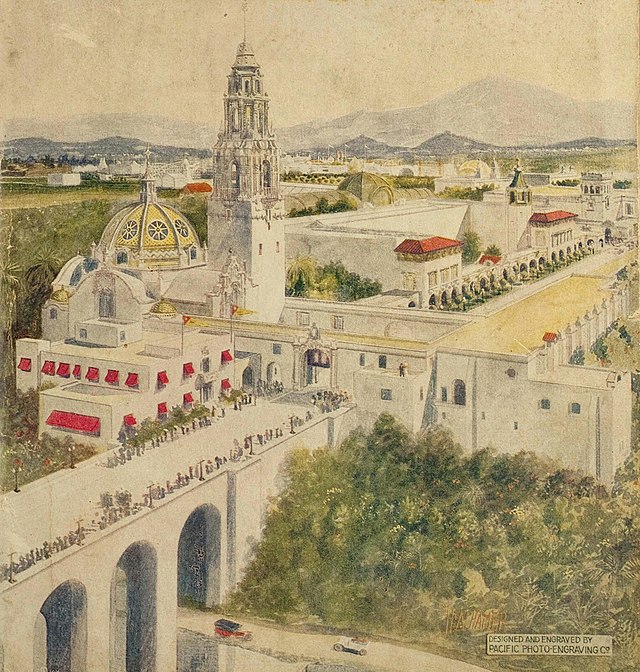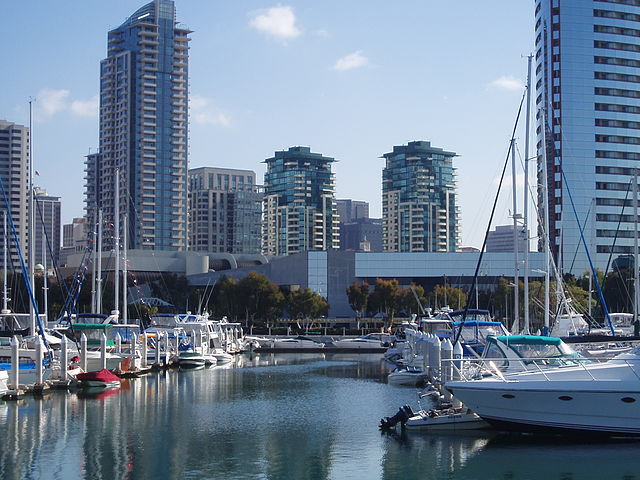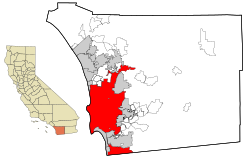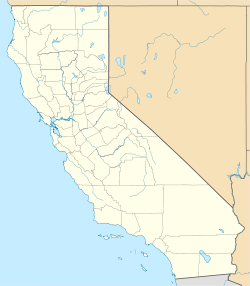San Diego
seat of San Diego County, California, United States; second-largest city in California From Wikipedia, the free encyclopedia
Remove ads
San Diego (/ˌsæn diːˈeɪɡoʊ/) is the second largest city in the U.S. state of California and eighth largest in the United States. It is at the southwest corner of California, as well as the southwest corner of the continental United States. It was founded in 1769 and it is the oldest city in California.[12] The mayor of San Diego as of 2025 is Todd Gloria.[13]
Remove ads
Background
It has comfortable weather most of the year. There are several military bases in and near San Diego. It has many beaches along the Pacific Ocean. The San Diego Zoo is very famous. The city has more small farms than any other city in the U.S., with about 7,000 farms.[14]
San Diego is home to San Diego State University, the University of California, San Diego, and University of San Diego.[15]
San Diego is on the international Mexico–United States Border.[16]
San Diego is home to the San Diego Padres baseball team.[17]
Remove ads
History
The San Dieguito complex was started in San Diego 9,000 years ago.[18] The Kumeyaay moved to the area around 1000 C.E.[19] They created villages in what is now Old Town, San Diego.[20][21]
The first European to visit San Diego was Juan Rodríguez Cabrillo. He claimed the land for the Spanish Empire and called it San Miguel. [22] In November 1602, Sebastián Vizcaíno visited the harbor (Mission Bay and Point Loma). He named the area after Saint Didacus, who was called San Diego de Alcalá.[23]

European colonization in San Diego started in 1769 when four groups of Spaniards came.[24] In May 1769, Gaspar de Portolá started the Presidio of San Diego on a hill near the San Diego River above the Kumeyaay village of Cosoy. Later, Cosoy became part of the European land. This was the first time Europeans came to California. In July 1769, Mission San Diego de Alcalá was started by Franciscan friars under Saint Junípero Serra.[25] Mission San Diego was the southern end of the trail El Camino Real. Both the Presidio and the Mission are National Historic Landmarks.[26][27]
In 1821, Mexico won its independence from Spain. San Diego became part of the Mexican land of Alta California. In 1846, the United States started a war against Mexico. They wanted to gain the land of Alta California. The Battle of San Pasqual was fought in the San Pasqual Valley, which is now part of the city of San Diego. The Americans lost many people.[28] After the Mexican–American War, Mexico and the United States signed the Treaty of Guadalupe Hidalgo in 1848. The treaty said Mexico had to give the United States the land of Alta California, including San Diego.
California became a U.S. state in 1850. In the same year, San Diego officially became a city. Joshua H. Bean, became the first mayor. In the late 1860s, Alonzo Horton moved to "New Town" (downtown San Diego). People moved there because its location on San Diego Bay was good for shipping products. New Town grew more popular than Old Town. It is important to the government and economy.[29]
In 1916, the neighborhood of Stingaree, which had San Diego's first Chinatown and "Soapbox Row", was destroyed so people could build the Gaslamp Quarter.[30]

In the early 20th century, San Diego hosted the World's Fair twice: the Panama–California Exposition in 1915 and the California Pacific International Exposition in 1935. Both fairs were held in Balboa Park. Many of the Spanish and Baroque-style buildings that were built for those fairs are still in the park[31] There were many foreign animals at the 195 fair. This inspired the creation of San Diego Zoo.[32] During the 1950s, there was a citywide festival called Fiesta del Pacifico. It showed the area's Spanish and Mexican past.[33]
The southern part of the Point Loma peninsula was set aside for the military in 1852. Over the next several decades the Army set up Fort Rosecrans.[34] The city was also an early center for aviation. As early as World War I, San Diego was calling itself "The Air Capital of the West".[35] The city was home to important airplane developers.

During World War II, San Diego became a major hub of military and defense activity, There were many military bases and defense companies. The city's population grew quickly during and after World War II, more than doubling between 1930 (147,995) and 1950 (333,865).[36] During the final months of the war, the Japanese planned to attack San Diego. They were going to attack on September 22, 1945, but it did not happen because Japan surrendered five weeks earlier.[37][38][39]
After World War II, the military continued to play a major role in the local economy, but post–Cold War cutbacks negatively affected the defense industry. So, San Diego leaders wanted to focus on science and tourism.[40]
In the early 1960s, Tom Hom became the first Asian American member of the San Diego City Council.[41] Later, Leon Williams became the first Black member of the city council.[42]

In the early 1980s, Downtown San Diego experienced the opening of Horton Plaza, the revival of the Gaslamp Quarter, and the construction of the San Diego Convention Center. Petco Park, which is home to the San Diego Padres baseball team, opened in 2004.[43] Outside of downtown, San Diego gained northern land and control of the San Ysidro Port of Entry.
As the Cold War ended, the military shrank and so did defense spending. San Diego is important to biotech and is home to telecommunications company Qualcomm. San Diego has many popular tourist attractions, such as the San Diego Zoo, SeaWorld San Diego, and Legoland California in Carlsbad.[44]
Remove ads
Demographics
2020 census
In the 2020 census, there were 1,386,932 people, 515,676 households, and 310,098 families living in San Diego. The population density was 4,255.9 people per square mile (1,643.2/km²). There were 548,934 housing units. The breakdown by race was 46.4% White, 17.9% Asian, 5.9% Black, 0.9% Native American, 0.4% Pacific Islander, 14.1% from one other race, and 14.4% from two or more races. Hispanics and Latinos made up 29.7% of the people.[45]
The median (middle) age was 35.8 years. The age breakdown was 18.9% under age 18, 67.1% from 18 to 65, and 14.0% over 65. The gender breakdown was 50.0% male and 50.0% female.[45]
Of the households, 27.9% had children under age 18, 43.4% had a married couple, 7.8% had an unmarried couple, 27.4% had a woman with no partner, 21.5% had a man with no partner, and 27.5% had one person living alone. The average household size was 2.57 people.[45][46]
As of January 2019[update], San Diego fifth-largest homeless population among major cities in the United States. In both the city and county, 8,102 people experienced homelessness.[47] In the city alone, 4,887 individuals were experiencing homelessness.[48] According to the San Diego Union-Tribune, homelessness is lessening.[49]
Substance abuse statistics in San Diego
Heroin, fentanyl, alcohol, and prescription drug addiction are common addiction types in San Diego. In 2017, there were 273 unintentional prescription-related deaths in San Diego County and 7,505 opioid-related visits to emergency rooms. From 2016 to 2017 there was a 115% increase of fentanyl-related deaths in San Diego. In 2017, there were 357 alcohol-related deaths in San Diego County. Of those deaths, 127 also involved prescription drugs, 15 involved a combination of heroin and prescription drugs, and involved heroin. 15,952 adults were admitted into drug treatment centers in San Diego in 2017.[50][51]
Remove ads
References
Wikiwand - on
Seamless Wikipedia browsing. On steroids.
Remove ads






